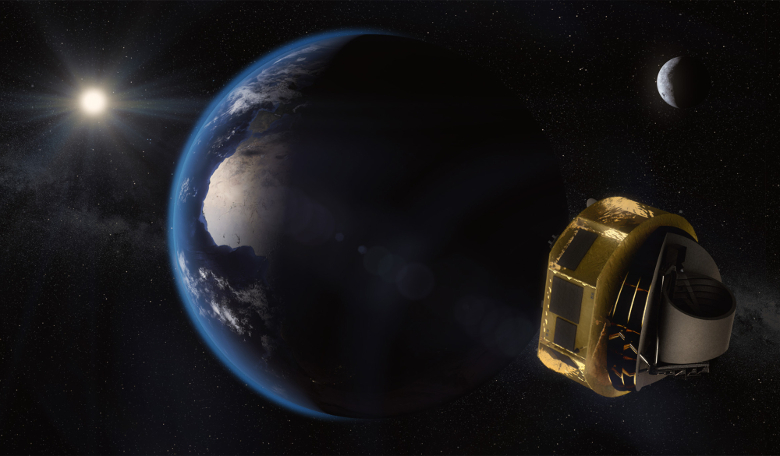Beating two other candidates for the number one spot, the European Space Agency (ESA) has selected the Atmospheric Remote‐sensing Infrared Exoplanet Large‐survey mission, otherwise known as ARIEL, as its next medium-class science mission.
Due for launch in 2028, ARIEL will address one of the key themes of ESA’s Cosmic Vision; what are the conditions for planet formation and the emergence of life?
To achieve this, ARIEL will scan the skies during its 4-year mission to observe 1000 exoplanets orbiting distant stars, to make the first large-scale survey of the chemistry of exoplanet atmospheres. Data collected from the mission should help enable scientists answer fundamental questions such as how planetary systems orbiting different types of stars, form and evolve to produce the myriad of exoplanets we see today.
Since the first confirmed detection of an exoplanet around a pulsar in 1991, thousands of exoplanets have been discovered and their diversity appears endless. All manner of exoworlds from hot Jupiters, sub-Neptunes and super-Earths have been found orbiting different types of stars, and there is no apparent pattern linking these huge range of masses, sizes and orbital characteristics to the nature of the host star.
ARIEL has been developed by a consortium of more than 60 institutes from 15 ESA member state countries, with UK institutions providing the leadership and planning for the mission. ARIEL’s Principal Investigator, Prof Giovanna Tinetti of UCL said, “Although we’ve now discovered around 3800 planets orbiting other stars, the nature of these exoplanets remains largely mysterious. ARIEL will study a statistically large sample of exoplanets to give us a truly representative picture of what these planets are like. This will enable us to answer questions about how the chemistry of a planet links to the environment in which it forms, and how its birth and evolution are affected by its parent star.”
The mission will focus on warm and hot planets, ranging from super-Earths to gas giants orbiting close to their parent stars, as these represent a natural laboratory in which to study the chemistry of their well-mixed atmospheres. The high temperatures experienced by the planets, helps keep different molecular species circulating, preventing them from sinking or forming cloud layers, and making them easier to detect.
Well-known ingredients such as water vapour, carbon dioxide and methane will be searched for with ARIEL’s metre-class telescope that looks at the molecules in visible and infrared wavelengths, but more exotic compounds will also be measured so that researchers can assess how the metallicity of the star affects the formation of the planet.
For a certain number of planets, the spacecraft will investigate seasonal and daily atmospheric variations while performing a deep survey of their cloud systems.
"ARIEL is a logical next step in exoplanet science, allowing us to progress on key science questions regarding their formation and evolution, while also helping us to understand Earth's place in the Universe," says Günther Hasinger, ESA Director of Science.
"ARIEL will allow European scientists to maintain competitiveness in this dynamic field. It will build on the experiences and knowledge gained from previous exoplanet missions."











